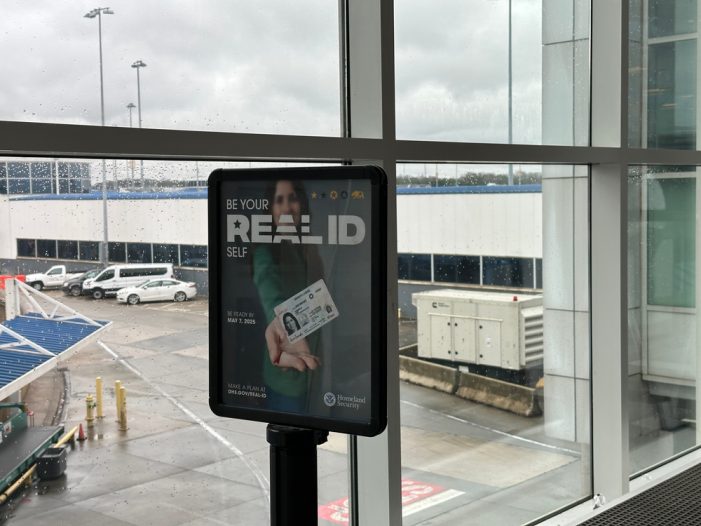By Mary Campbell | Editorial credit: RAMAN SHAUNIA / shutterstock.com
The REAL ID Act, passed by Congress in 2005, was a significant step in enhancing national security following the tragic events of September 11, 2001. Based on recommendations from the 9/11 Commission, the Act established a uniform set of security standards for state-issued driver’s licenses and identification cards. The goal was clear: to ensure that sources of identification—such as driver’s licenses—meet higher standards, making it more difficult for individuals to fraudulently obtain false identification.
One of the key components of the REAL ID Act is that it sets security standards for the issuance and production of state driver’s licenses and ID cards, which must meet certain criteria. This includes elements such as advanced security features, verification of the individual’s identity, and more stringent documentation requirements. However, its most noticeable impact is the prohibition of federal agencies from accepting non-compliant identification for specific official purposes.
What You Need to Know About the REAL ID Deadline
The upcoming deadline of May 7, 2025, marks a significant milestone for travelers and anyone who needs access to federal facilities. Starting on this date, anyone 18 years and older who plans to fly domestically or enter certain federal facilities will be required to present a REAL ID-compliant identification card—or another acceptable form of identification.
What Is REAL ID?
A REAL ID is a driver’s license or state-issued ID card that has been enhanced to meet federal security standards. These cards typically feature a star-shaped marking in the top right corner to indicate compliance. REAL IDs are designed to be more secure than standard licenses and can be used for purposes such as:
- Boarding federally regulated commercial aircraft: This is the most widely discussed impact of the REAL ID Act. If you’re planning to fly domestically, a REAL ID-compliant ID will be required at airport security checkpoints.
- Accessing certain federal facilities: REAL IDs will be needed to enter federal buildings, military bases, and other government properties where ID verification is required.
- Entering nuclear power plants: For security purposes, anyone wishing to access nuclear facilities will need to present a REAL ID or another form of federally approved identification.
What’s Not Affected?
It’s important to note that the REAL ID Act’s requirements do not extend to all uses of driver’s licenses and identification cards. Non-federal purposes such as driving, voting, and age verification (e.g., for buying alcohol) are not affected. You will still be able to use your regular driver’s license or state ID for these purposes, regardless of whether it is REAL ID-compliant.
What Happens After May 7, 2025?
After the deadline, travelers who attempt to board a flight or access certain federal facilities with a non-compliant ID will not be allowed to do so. Instead, they will need to provide an alternative form of identification that is acceptable under federal standards. This could include:
- A valid passport or passport card
- A DHS Trusted Traveler card (Global Entry, NEXUS, or SENTRI)
- A U.S. military ID or another form of federally accepted identification
How to Get Your REAL ID
To obtain a REAL ID, you will need to visit your local Department of Motor Vehicles (DMV) or equivalent state agency. You’ll be asked to present specific documents to prove your identity, such as:
- Proof of U.S. citizenship or lawful presence (e.g., passport, birth certificate, or permanent resident card)
- Proof of Social Security number (e.g., Social Security card or tax documents)
- Proof of state residency (e.g., utility bills, lease agreements, or bank statements)
It’s recommended that you check your state’s specific requirements and start the process well before the deadline to avoid delays, especially as the May 2025 date approaches.
Why REAL ID Matters
REAL IDs are a crucial component of the broader national security strategy, helping to prevent identity fraud and making it easier to verify the identity of individuals in sensitive situations. By ensuring that state-issued IDs meet a high security standard, the REAL ID Act helps federal agencies, such as the Department of Homeland Security (DHS) and the Transportation Security Administration (TSA), to carry out their roles effectively.
The requirement for REAL IDs is also part of a larger effort to streamline the security process in places like airports and federal buildings. By having a uniform system for identification, security personnel can more easily validate identities and focus on other critical aspects of protecting the public.
Conclusion
As the May 7, 2025, deadline draws nearer, it’s important to prepare for the changes brought about by the REAL ID Act. Whether you’re planning to fly domestically, visit a federal facility, or access certain restricted areas, make sure your identification complies with federal standards. Getting your REAL ID today will ensure you can continue to travel and access federal services without disruption in the years to come.
To avoid any last-minute rush, check your state’s DMV website and start the process early. It’s one step you can take to ensure smooth travels and avoid any surprises when the deadline arrives.

